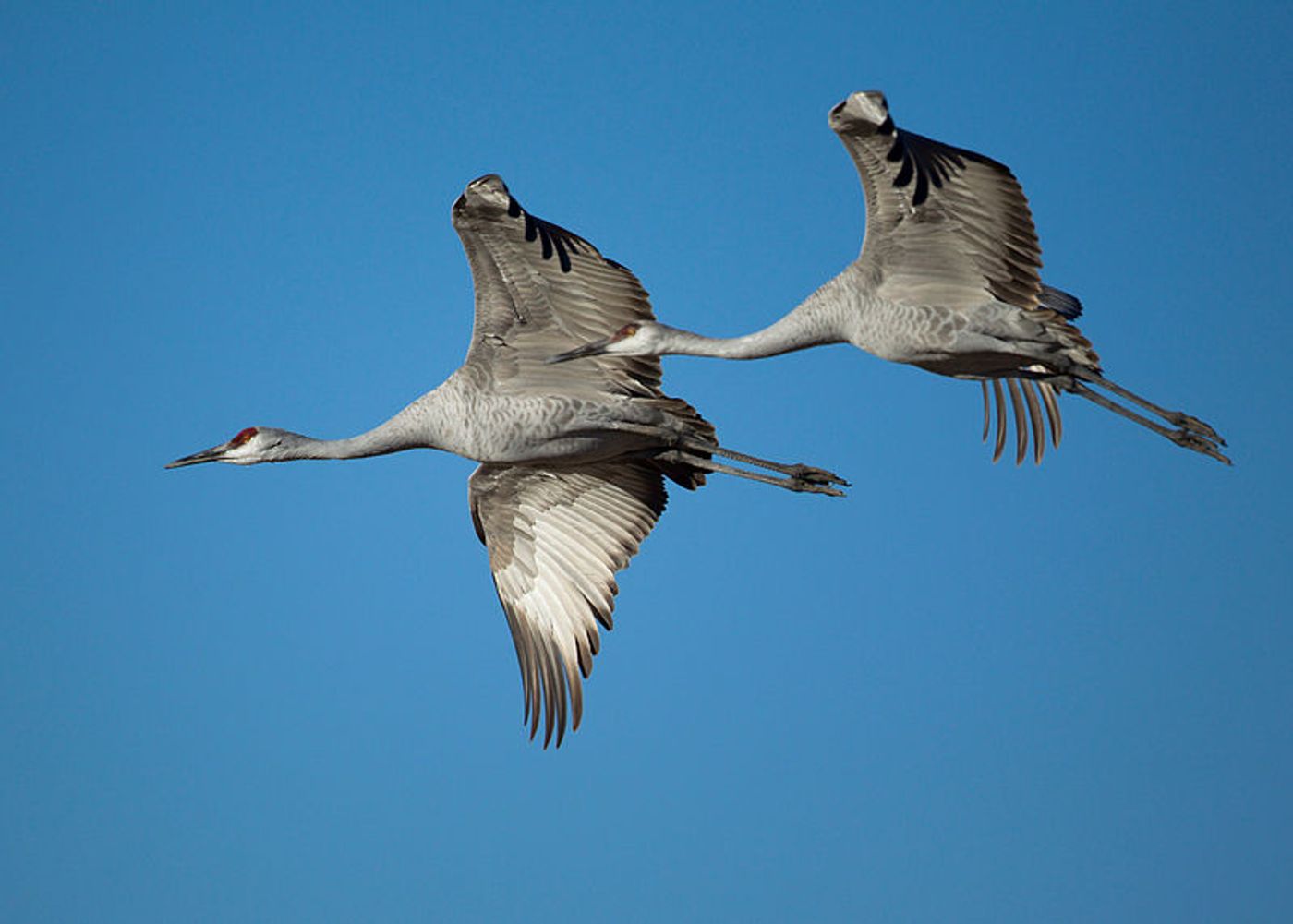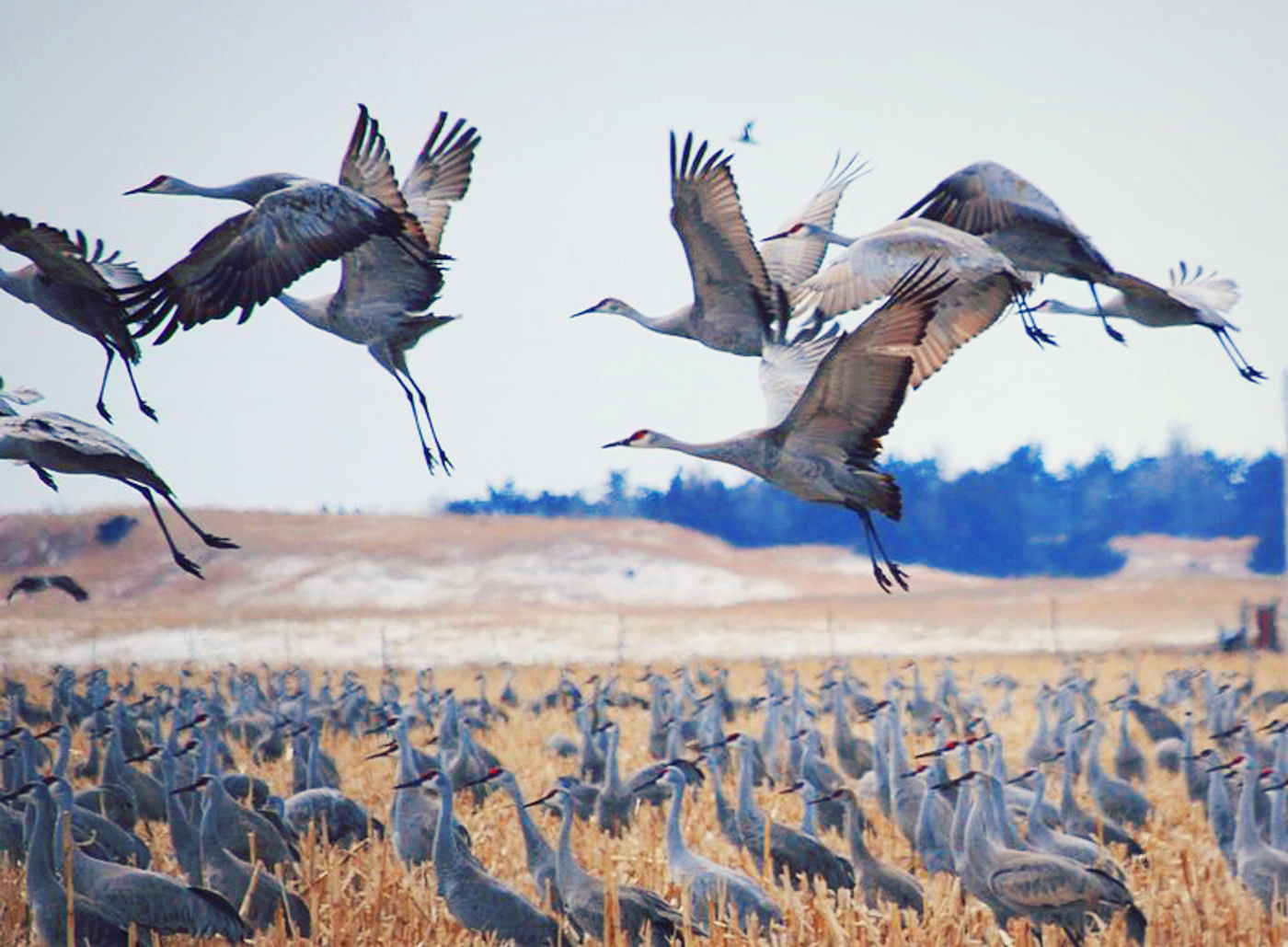Watch: America's Great Migration is Underway and Our Cranes Are Climate-Threatened
Between mid-February and mid-May each year, an immense migratory spectacle called “The Great Migration” takes place in Nebraska. It’s the largest migration of cranes in the world. Bill Taddicken is the director of Audubon Nebraska’s Rowe Sanctuary, which works to conserve and restore the Platte River ecosystem. He compares watching the migration before dawn to an orchestra tuning up in the dark.
“It will start to build and build and build until you have this crescendo of birds talking and moving and flying,” he says. About 600,000 Sandhill Cranes (pictured below) take part in this annual movement. Along with several million Snow Geese and two to 3 million other waterfowl that use the Platte River and valley at about the same time, this is truly one of America’s biggest migrations.
Audubon’s Climate Report
Sandhill Cranes are categorized as climate threatened in Audubon’s climate report. This report predicts how climate change will affect 588 North American birds’ ranges and is the first study of its kind. There are more than 900 species of birds in North America. Audubon scientists relied on about 30 years of citizen-scientist data gleaned from its Christmas Bird Count and North American Breeding Bird Survey to determine what temperatures, seasonal factors and precipitation each species needs. They then drew from “internationally recognized greenhouse gas emissions scenarios” to explore how the birds’ summer and winter ranges could contract, expand or shift in response to global warming.
Climate-Threatened Birds
Often, as the subtle environmental conditions birds rely on change, they become displaced, exploring new breeding grounds where unknown sources of competition and predation await. Audubon found that 314 species, more than half of all North American birds studied, are severely threatened by global warming. These birds are likely to lose more than 50 percent of their current range by 2080. A total of 126 are considered climate endangered and are predicted to lose more than half of their range by 2050. The group of the remaining 188 species, which includes the Sandhill Crane, are labeled climate threatened and are projected to lose 50 percent of their range by 2080 if climate change continues unabated.
Audubon Nebraska is dedicated to conserving the Platte ecosystem and prairie habitat for “cranes, other wildlife and people,” and has been doing so for about 45 years, says Taddicken. See footage of the Great Migration below. Rowe Sanctuary also has a live crane-cam where the migrating cranes can usually be viewed until about mid-April.
“If nothing is done to abate this threat, many of the bird species we love could disappear forever,” Gary Langham, Audubon’s chief scientist, says of the dangers of climate change for avian species. Along with cranes, familiar species of eagles, pelicans, owls and hummingbirds are all at risk. Langhan says the main steps we can all take at this point are to support reductions in carbon pollution and protect known bird habitats.









